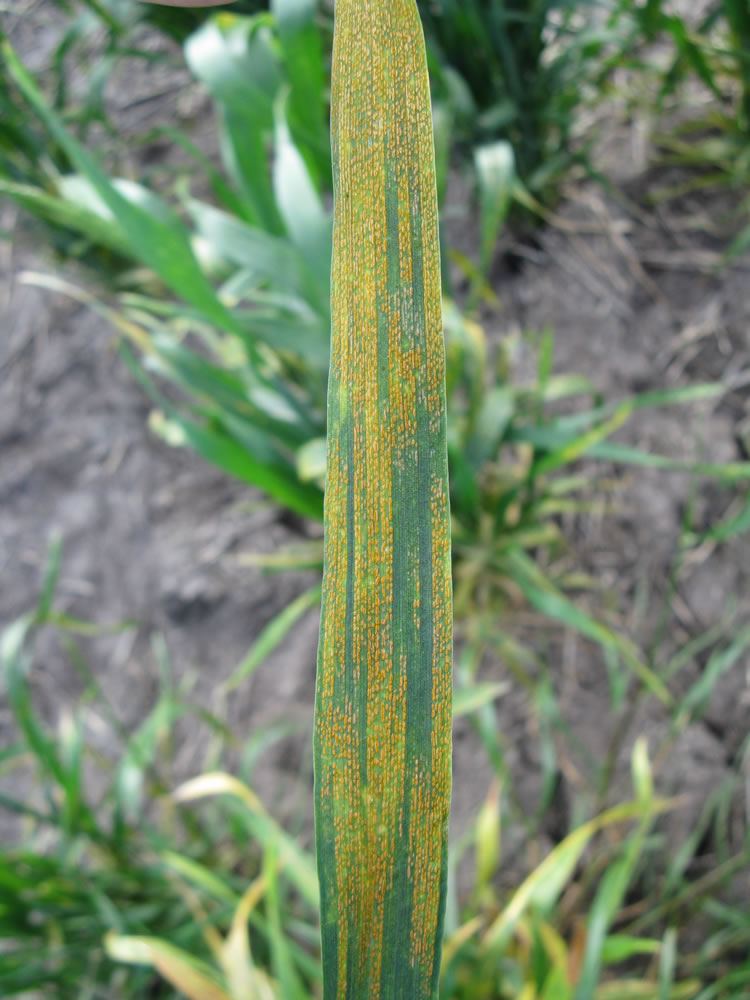Symptoms
The disease may appear as hot spots of one to ten metres in diameter in the crop, prior to the disease becoming widespread. Stripe rust is easiest to identify in the morning. Examine leaves, especially the older leaves, low in the canopy and look for yellow stripes of pustules. These pustules are raised above the leaf surface and can be easily wiped off onto a white cloth or tissue leaving a yellow stain. Stripe rust can also infect the developing head reducing grain number and size.
Organism
Puccinia striiformis f. sp. tritici (exotic strains)
Host range
Wheat (Triticum aestivum), durum wheat (T. durum), Triticale, and barley (Hordeum vulgare).
Method of spread
The spores are dispersed by wind, multiple times during a season. Stripe rust survives from one season to the next predominantly on volunteer
self-sown cereals but can also survive to a lesser extent on other cereal and grass weeds that grow over summer.
Conditions favouring disease
Spores require temperatures of less than 18°C (optimum 6-12°C) with a minimum of three hours of leaf-wetness (for example, dew) for germination and infection to occur.
After infection it can take 14 to 28 days for pustules containing spores to appear on the leaf surface.
Stripe rust epidemics are usually more severe in seasons following wet summers that have supported the ‘green bridge’, living plants mostly of wheat and to a lesser extent barley, triticale, barley grass, brome grass and phalaris. In Victoria, Stripe rust can be expected in crops by late August or early September in most years. Stripe rust does not survive on seed, stubble or soil.
Confused with?
Leaf rust caused by Puccinia triticina.
Where?
The fungus causing leaf rust is found around the world, including Australia. Exotic strains of the fungus are of potential concern to us.

Image 19. Yellow stripes of pustules.
Source: CropPro.


